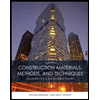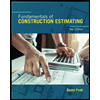Consider the building floor layouts illustrated below. These are referred to as Floor Layout A and Floor Layout B. Assume the floor to be built with composite steel-concrete construction (i.e. it is a composite steel-concrete floor). concrete core typical column Floor Layout A concrete core perimeter of the building floor perimeter of the building floor Floor Layout B (i) Provide two qualitative floor layouts for the primary and secondary beams for the Floor Layout A (Floor Layout A is shown above). Make sure to clearly draw the 2 floor layouts highlighting primary and secondary beams. Comment on the advantages and disadvantages of the two floor layouts with respect to one another. (ii) Consider Floor Layout B (Floor Layout B is shown above) and sketch one qualitative floor layout in which you provide qualitative locations of the columns, primary beams and secondary beams. Comment on the benefits of your selection of the positions of the beams and columns. Feel free to introduce any assumption that you might need in defining the building floors and in setting up your answer and discussion. Note: this question only requires a qualitative answer and the beams don't need to be sized.
Consider the building floor layouts illustrated below. These are referred to as Floor Layout A and Floor Layout B. Assume the floor to be built with composite steel-concrete construction (i.e. it is a composite steel-concrete floor). concrete core typical column Floor Layout A concrete core perimeter of the building floor perimeter of the building floor Floor Layout B (i) Provide two qualitative floor layouts for the primary and secondary beams for the Floor Layout A (Floor Layout A is shown above). Make sure to clearly draw the 2 floor layouts highlighting primary and secondary beams. Comment on the advantages and disadvantages of the two floor layouts with respect to one another. (ii) Consider Floor Layout B (Floor Layout B is shown above) and sketch one qualitative floor layout in which you provide qualitative locations of the columns, primary beams and secondary beams. Comment on the benefits of your selection of the positions of the beams and columns. Feel free to introduce any assumption that you might need in defining the building floors and in setting up your answer and discussion. Note: this question only requires a qualitative answer and the beams don't need to be sized.
Architectural Drafting and Design (MindTap Course List)
7th Edition
ISBN:9781285165738
Author:Alan Jefferis, David A. Madsen, David P. Madsen
Publisher:Alan Jefferis, David A. Madsen, David P. Madsen
Chapter38: Drawing Sections With Alternative Materials
Section: Chapter Questions
Problem 38.6Q
Related questions
Question

Transcribed Image Text:Consider the building floor layouts illustrated below. These are referred to as Floor Layout A and Floor
Layout B. Assume the floor to be built with composite steel-concrete construction (i.e. it is a composite
steel-concrete floor).
concrete core
typical column
Floor Layout A
concrete core
perimeter of the
building floor
perimeter of the
building floor
Floor Layout B
(i) Provide two qualitative floor layouts for the primary and secondary beams for the Floor Layout A
(Floor Layout A is shown above). Make sure to clearly draw the 2 floor layouts highlighting primary
and secondary beams. Comment on the advantages and disadvantages of the two floor layouts with
respect to one another.
(ii) Consider Floor Layout B (Floor Layout B is shown above) and sketch one qualitative floor layout in
which you provide qualitative locations of the columns, primary beams and secondary beams.
Comment on the benefits of your selection of the positions of the beams and columns.
Feel free to introduce any assumption that you might need in defining the building floors and in setting
up your answer and discussion.
Note: this question only requires a qualitative answer and the beams don't need to be sized.
Expert Solution
This question has been solved!
Explore an expertly crafted, step-by-step solution for a thorough understanding of key concepts.
Step by step
Solved in 2 steps with 1 images

Recommended textbooks for you

Architectural Drafting and Design (MindTap Course…
Civil Engineering
ISBN:
9781285165738
Author:
Alan Jefferis, David A. Madsen, David P. Madsen
Publisher:
Cengage Learning

Construction Materials, Methods and Techniques (M…
Civil Engineering
ISBN:
9781305086272
Author:
William P. Spence, Eva Kultermann
Publisher:
Cengage Learning

Fundamentals Of Construction Estimating
Civil Engineering
ISBN:
9781337399395
Author:
Pratt, David J.
Publisher:
Cengage,

Architectural Drafting and Design (MindTap Course…
Civil Engineering
ISBN:
9781285165738
Author:
Alan Jefferis, David A. Madsen, David P. Madsen
Publisher:
Cengage Learning

Construction Materials, Methods and Techniques (M…
Civil Engineering
ISBN:
9781305086272
Author:
William P. Spence, Eva Kultermann
Publisher:
Cengage Learning

Fundamentals Of Construction Estimating
Civil Engineering
ISBN:
9781337399395
Author:
Pratt, David J.
Publisher:
Cengage,